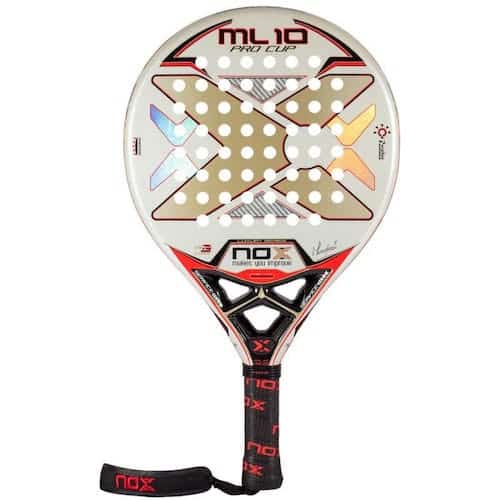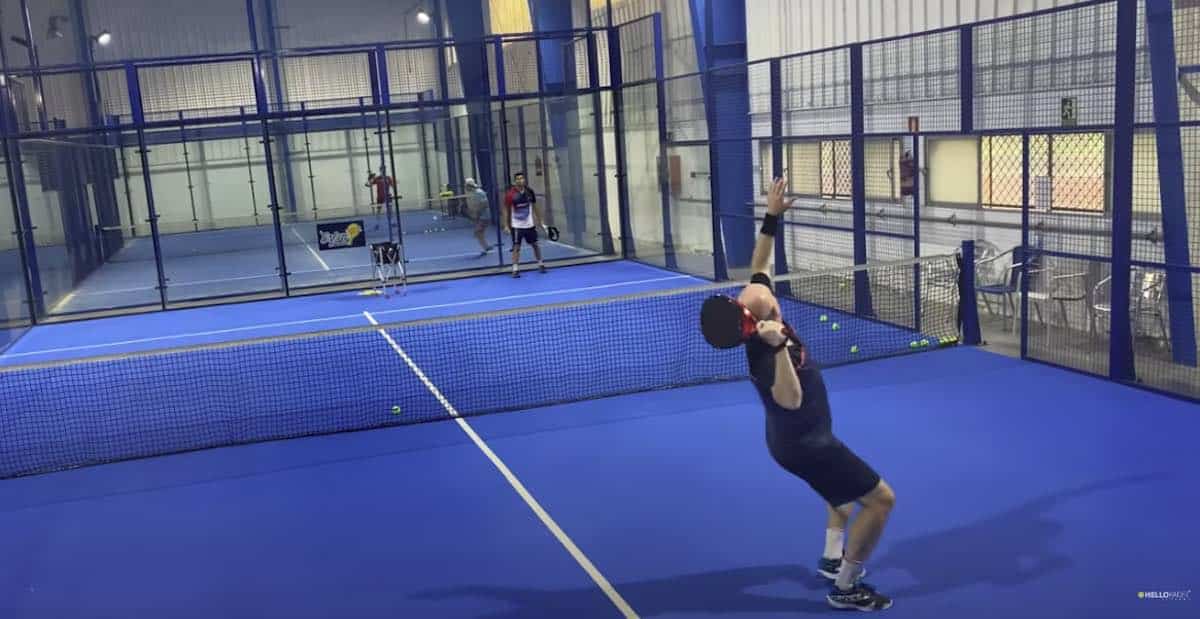Anyone who’s played Padel will know or have seen videos of the kick smash. This versatile shot can be used to close the point but is also incredibly difficult to get right.
Once you’ve mastered hitting this difficult shot, you’ll be one step closer to beating any opponent on the court.
We’ve listed a few Padel smash tips to help you add more spin to your kick smash to have the best chance of the ball flying out of the court, killing the point (more or less).
Kicksmash Padel Tips: How to learn and master this move
Follow these smash tips, and you’ll head to a better kick smash!
1. Positioning
You must ensure you’re in a good position to play a kick smash.
Ideally, it would be best to be near the center of the court when you play a kick smash to ensure your smash sends the ball outside the court. It’s both a position play, but also angle play.
Give yourself enough time to wind up and get into position to hit the ball quickly and accurately and win the game.
IMPORTANT: Prioritize technique over power!
I’ve seen many newer Padel players attempt a powerful smash, only for their opponent to return the ball easily.
A common rookie mistake is assuming more power will improve their kick smash.
However, I’ve found that the perfect Padel smash requires topspin, not power.
The point of getting topspin is to make the ball bounce higher. As you make contact with the ball, brush it upwards before you send it across the court for more bounce!
2. Posture
Before hitting the ball, ensure your non-dominant hand is raised properly. This will put more power behind your kick smash.
For example, if you’re right-handed, raise your left arm before you hit the ball to put more force behind your shot.
Keep your feet steady before sending the ball back, but remember to lean back. Leaning back puts more body weight behind your shot.
Keep your arm slightly relaxed before hitting the ball. This will help you put more speed and force behind your smash.
3. Proper grip
Different play styles require different padel rackets, but your grip also matters. I advise using the basic Continental or handshake grip for your racket.
Keep your wrist slightly loose so that it snaps on impact to add more power to your smash.
Reminder:
If your elbow hurts while playing Padel, your racket’s grip may be too small. Consider adding an overgrip to your racket for comfort.
Get the right Padel racket
The padel racket is also an important part of a good padel smash. Different padel rackets will produce different results.
Diamond-shaped rackets are the standard for powerful shots and will help with hitting smashes more often, but I recommend round rackets for newer players.

- New SmartStrap™ replaceable safety strap system
- The AVS lateral anti-vibration system helps facilitate shots and achieve a great spin
- One of the most sold padel rackets of all time
The Nox ML10 is a comfortable racket that’ll give you greater ball control wherever you are on the court.
4. Correct contact point
If you’re new to Padel, your instinct is probably to smack the ball once it’s at face level, but smashing is different.
To accomplish a kick smash, hit it when it’s slightly above your head. Whether right- or left-handed dominant, brush the ball upwards to take advantage of the topspin.
Tip:
If you’ve come from a tennis background, you may be used to smashing with more force. Don’t hit the ball too hard!
5. Aim correctly
Where you direct the ball is just as important as how you hit it. Aim so that the ball lands on or just before the service line.
This is a balancing act because you’ll lose momentum if you send it back too short. Likewise, please don’t hit the ball too deep because it won’t have enough height, and your opponent can easily send it back.
6. Timing
Amateur players may discount the importance of timing, but World Padel Tour players have also incorporated timing into their play style.
I recommend smashing once the ball reaches its highest point, above your head. Remember to follow through on your swing!
Perfect timing comes with practice, so ensure you’ve mastered the basics and are properly warmed up before attempting this powerful shot.
How to defend against the Padel smash
These smash tips are meant for attackers, but what happens if someone uses the kick smash against you? You’ll need to know how to send that ball right back!
If the opposing side hits the ball toward you, let the ball hit the back glass as you step toward the side wall and run towards the net. Once the ball bounces once, hit it back.
Depending on the skill of your opponents, sometimes this could give you an easy point by just standing at the net and knocking the ball out of court “the other way” so to speak.
Remember to watch your partner’s position while playing.
What are the different kinds of smashes to learn in Padel?
Several Padel smash varieties can send your opponents running across the court or helping to kill a point. Here are a few.
1. Gancho
This powerful shot is a cross between the smash and the bandeja. It can be aimed down the line or toward the sides.
I recommend using the Gancho when your opponent lobs the ball toward your left side. This shot will force the other players into the back corner of the court or toward the side glass.
Warning:
Don’t put too much force into your shot! If the ball rebounds too much, an opposing player can easily send it back.
2. Topspin smash
If your opponent hits the ball toward the back glass, you can use this shot to serve it back.
To accomplish this, ensure the ball matches your racket’s highest point or near the top.
3. Kick smash
To execute this aggressive smash, ensure you hit the ball toward the back wall using the ball’s topspin.
Using a sidespin is also needed, but it should be a lighter brush. Sidespin can make this shot harder to execute and cost you the point if you don’t get it out of the court.
4. Flat smash
This shot involves hitting a high ball with speed and power. Be careful when smashing the ball flat since it can return quickly if it hits the wall.
Smashing flat may redirect your ball toward the center of the Padel court. This is like giving away a point, so avoid it!
Conclusion
Padel players can quickly respond to a good serve, but a correctly-executed kick smash with the right speed and spin can leave your opponents in the lurch.
Unless you’re playing in a semi-professional league, defending the kick smash is hard. There are very few amateur players that would run out of the court to save a smash that exits the court.
It also helps show the opposing team that a high lob isn’t a problem for you, and you can respond quickly and forcefully.
Even if you’re playing at a beginner/mid-level, learning to do a proper kick smash can give you an edge in this game!
Frequently Asked Questions about the kick smash in Padel
To hit a topspin smash in padel, start with a continental grip and position yourself below the ball. As you swing, accelerate your racket upwards and brush the back of the ball with an upward motion. The brush will help the ball exit the court on either side, depending on your aim.
To execute a topspin smash, use a continental grip, and prepare your racket behind and above your head. As you swing forward, snap your wrist and brush the back of the ball in an upward motion to generate topspin. Finish the follow-through with your racket pointing towards the ground.
It depends on the type of smash, but generally; aim your smash at the weak spots of your opponents’ court, such as the corners or near the walls. Target areas where your opponents have difficulty reaching or returning the ball. Remember to mix up your shots to keep your opponents guessing and prevent them from anticipating your next move.
To smash the ball out of court in padel, hit the ball with enough power and a slightly upward/side trajectory so that it bounces on the opponent’s side, in the glass, and then goes over the fence and out of court.

Patricia Nguyen is a former pickleball player who joined SimplePadel as a Content Writer in late 2022. She lives in Texas with her two dogs and is an avid fan of the sport. Her favorite player is Ale Galán, whom she believes to be the best defensive padel player that ever played the game.
